To remove papilloma on the body without consequences, you need to know not only the basic methods, but also how to properly care for the resulting wound in the future.
The procedure for the destruction of the wart is important, but the subsequent care of the wound surface is no less significant. Thus, complications can be avoided. The attending physician must tell about the methods of care.
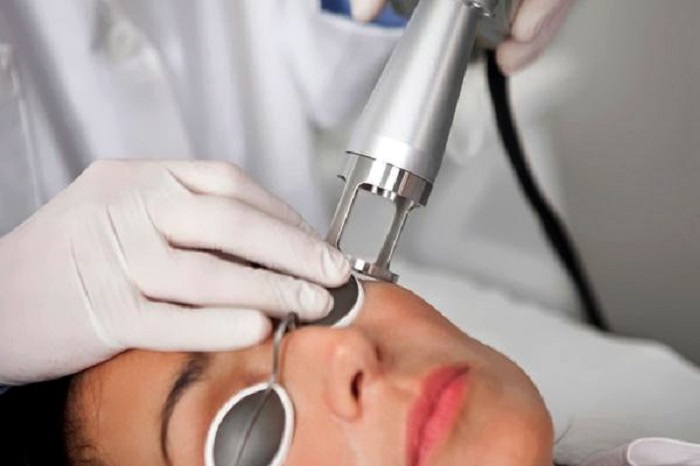
Содержание:
How should the place on the skin normally look at the end of the procedure?
After removing the papilloma, a sterile bandage is applied to the site of the formed wound. For the first few hours, it is forbidden to remove the bandage, since an infection can penetrate into the unprotected wound surface. Sometimes there is a small amount of blood.
A few days later, a crust forms on the wound. It protects against the penetration of dirt and pathogens. As the crust tightens, the healing process takes place.
If the crust has not yet formed, then the wound will be more vulnerable. The skin around this place can also be prone to inflammation, so it is treated with disinfectant solutions.
How long does the lesion take to heal?
The healing time for each case is different. It depends on the individual characteristics of the organism. The process can take up to half a month. Although a person can feel a noticeable improvement in a week, the pain and discomfort disappear.
If itching occurs at the site of papilloma removal, this means that the healing process is proceeding as it should. Sometimes, in the presence of complications, the papilloma wound can heal up to 3-4 weeks. The time will also depend on the method of removing the papilloma:
- If cryodestruction was performed , then healing can take up to several months.
- With laser removal, the average time for tissue regeneration is determined by two weeks.
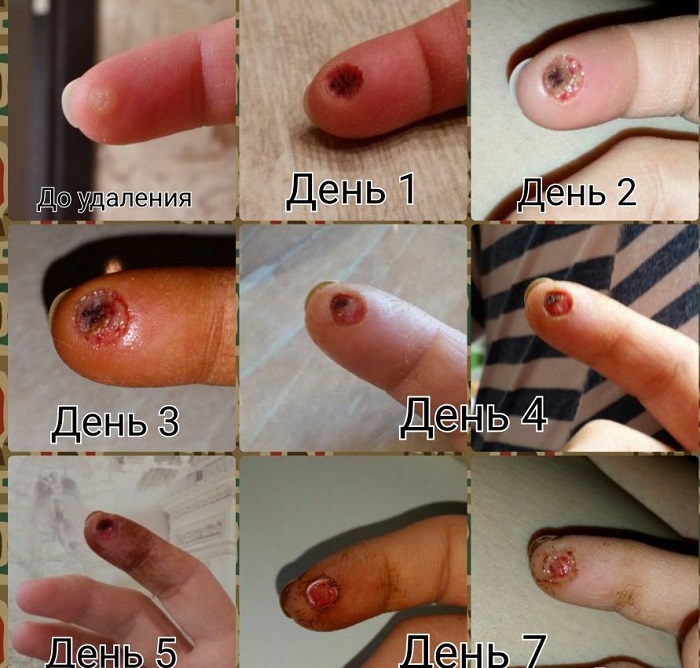
Proper care: how to care, how to handle
In order for the wound to heal properly, you need to know some rules for caring for it. Care includes several stages.
Procedures
The formed scab should not be removed, otherwise it will lead to inflammation and the formation of a rough scar. Do not rub the crust and washcloth.
Means for relieving inflammation on the skin
To disinfect the wound, various solutions are used:
- Chlorhexidine.
- A solution of potassium permanganate.
- Decoction of calendula.
Solutions are used to treat the skin around the wound.
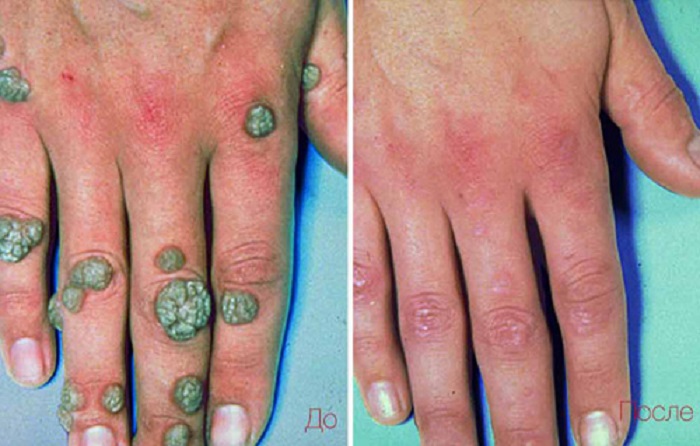
Infection protection
For 7-10 days after the growth is removed, an antibacterial ointment is applied under the bandage to prevent infection. Its composition is determined by the doctor depending on the situation. The most commonly used drugs are:
- Acyclovir .
- Viferon .
- Oxolinic ointment .
- Panavir.
- Infagel.
Reasons for long healing
If the wound does not heal for a long time, then we can talk about the complications that have begun. This happens with a strong laser effect on the papilloma, which causes deep damage. Another reason may lie in non-compliance with the doctor’s recommendations during the rehabilitation period.
Regarding the negative consequences, there may be such complications:
- Suppuration of the wound. At first, the laser treatment site swells and turns red. The presence of pus at first is not visible, but pain prevails. You can notice the purulent contents after the fall of the dried crust.
- Rough scar formation. The reason for its formation is the presence of inflammation in the body or an individual feature of a person. As a result of this, the scar is not smooth, but protrudes above the surface of the skin.
- Violation of the pigmentation process. That is, the scar acquires a dark shade or, conversely, light. This can happen due to improper alignment of the laser and its deep impact on the area of application, as well as due to improper subsequent wound care.
- Damage to adjacent tissues. This is manifested by redness, the appearance of blisters or other rashes, the presence of edema.
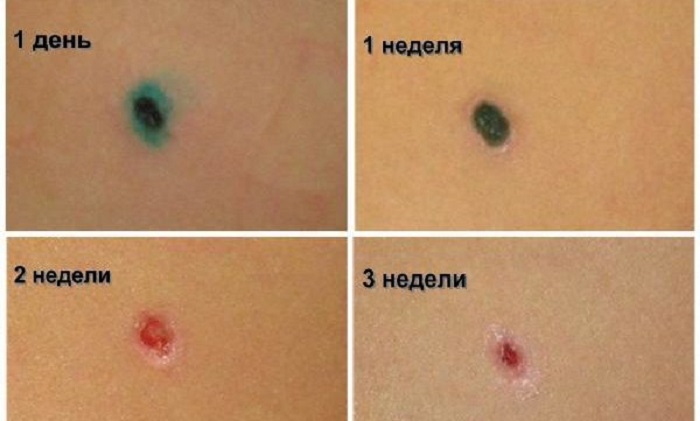
All these consequences lead to a long healing of the wound, and this circumstance requires additional consultation with the attending physician.
Possible Complications
The procedure for removing warts is not considered dangerous, but there are still complications. You should know more about them to prevent occurrence.
Swelling of the affected area
It can form due to an allergic reaction to the anesthetic. If the patient knows about this, then he should inform the doctor. Often there is an allergy to lidocaine or novocaine, which are used to excise large growths.
The wound does not heal
In this case, the wound becomes wet, there is an inflammatory process in it. Typically, this condition is observed when the removal procedure is incorrectly performed or due to errors in subsequent care. It is necessary to inform the doctor about your condition, he will give additional recommendations on the treatment of a non-healing wound.
Prolonged healing of the site of removal of warts can also be associated with other diseases, against which immunity is reduced, for example, diabetes mellitus, hematopoietic diseases, hormonal disruptions. Even bad habits can affect the healing process.
Burn at the end of the procedure?
A burn can occur due to exposure to a powerful beam of light from a laser exposure. It is not worth delaying treatment.
The reasons for the appearance of a burn are the patient’s ignoring the doctor’s recommendation, the incompetence of the specialist himself, in violation of the technique of the procedure (for example, prolonged exposure to the laser), the presence of contraindications to laser treatment of papilloma.
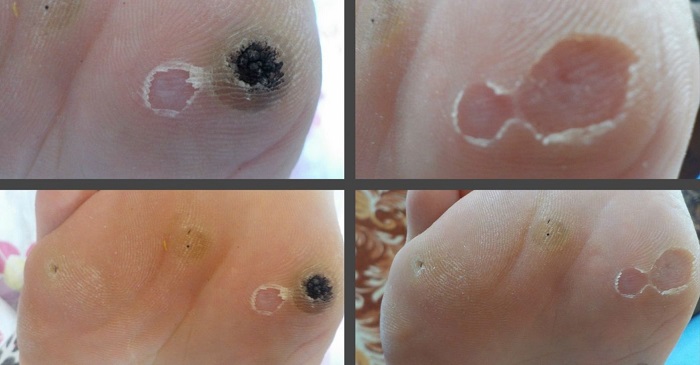
The growth has reappeared
Such a complication after competent laser removal is excluded. If a new wart has appeared, it means that laser therapy was performed poorly.
A similar circumstance may also be associated with a negative impact on the body as a whole, for example, the appearance of diseases, stress factors, the use of potent drugs or alcohol in large quantities.
Prevention of complications
If you do not take care of the wound, then complications can begin. In this case, it is enough to correctly carry out all preventive measures:
- Usually, treatment agents are prescribed by a doctor, depending on the location of the papilloma and the individual qualities of the patient. As a rule, these are anti-inflammatory drugs and antiseptics.
- Treatment with disinfectants, such as iodine, brilliant green or potassium permanganate, is important.
- When the crust begins to peel off, this place can be lubricated with Hydrocortisone ointment (1%), Methyluracil ointment or Solcoseryl.
- In order for the body to produce sufficient amounts of collagen and elastin, which are important for wound healing, it is necessary to normalize your diet, start taking multivitamin complexes.
In order to avoid the development of various complications in the future, it is necessary to carefully approach the choice of a specialist. It is also important to follow all the recommendations of the doctor.







